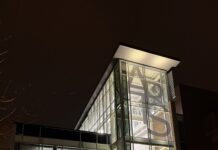If you bought a ticket, your odds of winning the latest Powerball lottery were one in 175 million. If you were a resident of Gaza this past summer, your chance of winning the Israel death lottery was one in 1,000.
This summer, the eyes of the world were trained on Gaza as its besieged population resisted a 50-day massacre called Operation Protective Edge. According to the United Nations, 2,131 people were killed, including 501 children. Children who survived Israel’s summer killing spree have returned to bombed-out schools and the UN is estimating that 373,000 children in Gaza will “require direct and specialised psycho-social support”.
These violent assaults on an occupied populace are no aberration. Since 2004, we have seen Operation Days of Penitence (that name is messed up), Operation Summer Rains (including the infamous Gaza beach blast in which nearly the entire family of seven-year-old Huda Ghaliya was killed), Autumn Clouds, Hot Winter, Cast Lead (Winter of 2008–09), Pillar of Defense (2012), and this past summer, Operation Protective Edge. Add the regular barrage of Israeli artillery shells that pour into the Gaza Strip and result in the deaths of civilians year-round. The massacres of Gaza are part of a continuum and, unless the Israeli state and Zionist project are stopped, Gaza will be the future of all Palestinians.
Sick of hearing about Palestine? History repeats itself and we need look no farther than Canada. The decimation of the indigenous peoples of North America and its resulting legacy is often overlooked by Canadians, who instead choose to embrace the idea of Canada as a beacon of peace in a wayward world.
Do you think Canada is a nation of peace built on peace? While the reign of our current prime minister is quickly changing this perception, Canada has long been viewed as an international peacemaker. And when pressed to identify which Canadian notable might be responsible for this perception, many point to Pierre Trudeau. Trudeau, the defender of human rights, universal healthcare, and the Charter of Rights and Freedoms.
Trudeau, together with his minister of Indian affairs Jean Chretien in 1969, put forth the policy paper proposal known as the White Paper. If passed, the White Paper would have worked to eliminate “Indian” status and the Indian Act, a statute that concerned Indians and Indian reserves. The policy would have had a severely negative impact on Aboriginal peoples, treaty rights, land titles, self-determination, education, and health care. First Nations author Harold Cardinal referred to the White Paper as “a thinly disguised program of extermination through assimilation.”
It is no accident that the Canadian government has not publicized its role in the extermination of the indigenous peoples. And Canada is not alone in its attempts to “whitewash” its colonial violence. Israel too has sought to gloss over the ongoing settler colonization of Palestine by redirecting international attention towards a comparison between the supposedly stellar record of gay rights in Israel and the state of life for LGBTQ people in Palestine. Branding itself as a gay-friendly tourist hotspot is an attempt to distract from ongoing violence and aggression perpetrated by the Israeli state.
Settler colonialism is at the core of outrageous breaches of human rights both in Palestine and Turtle Island. It is our responsibility as Canadians to dismantle the harmful legacies of colonialism within the state and to recognize that the settler project is ongoing.
Zainab Ramahi
Knowledge Integration & Political Science
Sepehr Mohaddes
PHD candidate, Mechanical Engineering































